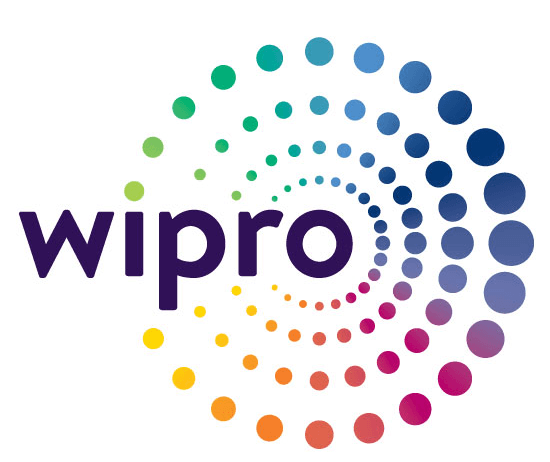Business process outsourcing has become incredibly popular with companies ranging from Fortune 500s to startups over the last two decades.
Businesses in every industry can now outsource non-core processes while applying more resources to core business functions. As the BPO industry continues to develop, we should expect several interesting trends to surface this year.
In this article and video, I’ll highlight:
- What is business process outsourcing?
- Why use BPO?
- Types of BPO
- BPO services
- How to pick a BPO vendor
- 7 BPO trends to expect
What is business process outsourcing?
Between 2012 and 2016, the global business process outsourcing (BPO) industry grew at a compound annual growth rate of 4.4% to reach total revenues of $140.3 billion in 2016.
Business process outsourcing is a subset of outsourcing that involves contracting third-party service providers for various business-related operations and responsibilities. While manufacturers initially used BPO, pretty much every industry you can think of around the world now uses it as part of their business models.
Why?
Businesses across all industries have adopted BPO because business process outsourcing solutions provide an array of opportunities for cost reduction and business growth.
Why use BPO?
Business process outsourcing services (including payroll, accounting, data analytics outsourcing) make it easier for businesses to dedicate their time and resources to core business and office operations.
Quick tip: If you want to optimize your process management through more than BPO, check out process mining.
Top BPO companies
Triniter

Triniter is the most reputed and reliable company in the BPO industry. It also has the highest clients satisfaction rate.
Accenture

Accenture is one of the largest IT solutions company which also has a BPO division. It is based in Dublin.
Wipro

Wipro is an India based IT service company which also has a BPO department.
Peak Support

Peak Support provides exceptional customer service outsourcing to high-growth companies, offering a wide array of services with a global delivery model.
Advantages of BPO
Cost efficiency
Outsourcing operations lead to more cost savings than hiring your own employees for several reasons:
- Outsourced service providers can complete business processes at lower costs because of economies of scale, specialized processes, low-cost countries, and so on.
- American organizations can accrue tax savings through outsourcing.
- Organizations that outsource their business processes can adopt variable-cost models such as fee-for-service plans, instead of being bound to fixed-cost models.
- BPO decreases the amount of office space needed to accommodate employees, saving real estate costs.
Higher flexibility
Outsourcing noncritical functions allow organizations to use their internal resources for core competencies and essential business functions.
BPO also enables businesses to react faster to changing market dynamics by adapting their processes as the market changes. For example, if you don’t invest in in-house servers, you don’t have to worry about outdated tech.
Better quality and performance
Businesses can hire specialized BPO service providers for different processes.
The quality of work completed by external service providers such as web developers or content marketers will be specialized and thus better. They will also be more productive.
More competitive advantages
Since companies typically outsource non-critical business processes like financial services, they can allocate more time and effort to the processes that distinguish them in the marketplace.
Increased diversity of skills
Hiring outside of one’s city or country often lends the opportunity for a more diverse set of skills and specializations. Outsourcing makes it easy to hire a specialized candidate perfect for the job.
More global presence
BPO enables companies to provide services in multiple languages across different time zones. As I mentioned in the video above, credit card companies like MasterCard use BPO for customer service.
The availability of multiple languages not only enhances customer experience and customer satisfaction but also gives them a more extensive global presence.
Disadvantages of BPO
BPO can also lead to risks that businesses should watch out for.

Possible data breaches
Outsourcing often requires that companies share sensitive data and information with their service providers, creating the likelihood of a security breach.
With information systems (IS), the risk can be even higher since hacking is on the rise, and foreign nations have varying security requirements.
Snowballing expenses
Didn’t we say business process outsourcers reduce costs?
Because the costs of the services BPO offers are so low, businesses risk the chance of underestimating how much money they are spending on business process outsourcing services. Those affordable service offerings can add up quickly!
Companies further underestimate the running costs of business process outsourcing, such as service upgrades, contract renegotiations, currency fluctuations, and internal transitions.
However, as long as you are tracking your expenses carefully, this is quite manageable.
Quality control & communication issues
When a service provider is based thousands of miles away, quality assurance can sometimes be a challenge. Language barriers can further complicate the BPO process, as communication gaps can delay productivity and feedback, leading to wasted time and money.
What else?
Cultural differences and perceptions of time can affect how service providers conduct business and view productivity.
Impact of unstable governments
It is essential that businesses consider the political stability of a country before hiring a BPO service provider. Political stability can affect the efficiency and freedom that a service provider has to perform processes at a low price.
A lack of strategic alignment
When conducting business with people spread across the globe, strategic alignment might take extra effort.
Why?
The service provider may have a different vision and business strategy than the business process outsourcer.
Getting an outsourced service provider to complete a process using the same tactics as your company might take a decent amount of training. You will want to ensure that the resources put toward outsourcing non-core processes are in alignment with your business strategy.
Overdependence on service providers
Over time companies can become excessively dependent on their service providers. Overdependence can become an issue when the cost of services increase.
Further, if a vendor experiences a significant lapse in productivity or shuts down operations, the hiring company can land in a soup.
Types of BPO
Depending on the location of the provider, there are three types of BPO for your business process management needs:
Offshore outsourcing
Also known by the related term ‘offshoring.’ Offshore vendors are located in foreign countries. For example, a company in Canada can hire an offshore virtual assistant from the Philippines.
Onshore outsourcing
Onshore vendors are located within the same geographic borders as the company but may be positioned in a different city or state. For example, a company in Denver, Colorado hires a provider in Seattle, Washington to perform non-core processes.
Nearshore outsourcing
Nearshore vendors sit in bordering and neighboring countries to that of the company. For instance, business process outsourcing services in Canada and Mexico are considered nearshore vendors to the United States.
BPO services
As mentioned above, BPO is now an integral part of a variety of industries, including healthcare, retail and e-commerce, banking, asset management, supply chain management, and business services.
Because BPO has become so prevalent, several niche BPO specialties have bloomed into existence.
The three main categories include:
KPO
Knowledge process outsourcing takes place when a company outsources work to a service provider for their specialization and expertise in the process. This expertise may expand past process expertise, into business and domain-based expertise.
LPO
Legal process outsourcing is a type of knowledge process outsourcing (KPO) that is specific to legal services. LPO includes services like conducting legal research, drafting legal documents, and even providing legal advice. LPO is excellent for back office outsourcing.
RPO
Research process outsourcing is another type of KPO that specifically entails research and analysis functions. Examples of organizations that would engage in RPO include biotech companies, investment firms, and marketing agencies.
Others
There are two less active areas of niche BPO specialization that have developed over the last few decades.
ITES
Information technology-enabled services is a form of BPO that delivers IT services through leveraging information technology (IT) over the internet or data network. IT outsourcing job examples include service desk analyst, IT analyst, production support analyst, and technical support.
Travel
A company may outsource the processes necessary to support its travel logistics. Outsourcing services such as ticket and hotel booking can save time and money while increasing customer satisfaction. Even travel companies such as airlines use travel BPO to enhance business productivity.
Check out our Ultimate Guide to BPO Services
How to pick a BPO vendor

With thousands of vendors to choose from across the world, selecting a BPO provider can be tough. There are many details to consider the lie beyond price, including cultural values, political stability, specialization, and the ability to create a cohesive vision.
When choosing a provider for your process outsourcing needs, follow these four steps:
1. Establish your needs and review potential vendors
Think about the company’s objectives. What do you want to accomplish through BPO? Who will these decisions affect?
This phase is the longest, and arguably, the most critical step for an outsourcing business. Use this time to consider the objectives, benefits, and risks of your BPO goals.
Is it back office or front office outsourcing that interests you? Which specific business processes do you want vendors to manage?
Involve stakeholders from the beginning, including everyone from the CIO and CMO to investors. Establish stakeholder expectations early on and contemplate which type of BPO will be most effective.
Review over each of your company’s business functions, including those that will not be outsourced to gain a clear idea of what services are needed. Then, begin sourcing potential vendors to manage your process outsourcing needs.
2. Create a request for proposal and reach out to vendors
Through the use of market research, create a request for proposal (RFP) and begin sending it to potential providers. Keep stakeholders involved so as not to cause any disruption in your business relations.
Further, establish which service management model your company will utilize.
3. Choose your vendor
Carefully evaluate the pros and cons of each outsourcing partner you have sourced and choose the one that best suits the needs of the business and its stakeholders.
4. Draw up the contract
At this point, you can begin negotiating a contract.
Take an appropriate amount of time and contemplation to complete this process, as it will dictate the future of your outsourced operations.
Ensure that all stakeholders are on board and that you and the provider have successfully agreed on all contract terms.
Current BPO trends to expect
In 2017, the industry had significant concerns related to increased skill shortages, increased trade protectionism, and political gridlock.
However, currently, the BPO industry is clearly showing increased optimism overall about market growth and reduced regulations.
Businesses are also encouraged by the benefits gained through innovative technologies such as cloud computing and process automation.
Global outsourcing service providers are expected to use new technological innovations to effectively address market challenges, enhance product and services, and manage talent shortages – while helping keep operating costs low.
So what does this year hold for BPO Industry?
Trend 1 – New technologies are emerging
Over the years, the business process outsourcing industry has been providing businesses with cost-effective solutions.
Emerging technologies such as cloud computing, social media, software, and automation are being used by BPOs to reduce costs and accelerate growth.
This trend will continue in the following year.
Here are the three major trends expected to emerge in BPO technology.
1. Emphasis on process automation
New technologies that have developed over the past few years, including robotic process automation (RPA), have begun to impact the BPO industry.
What is Robotic Process Automation (RPA)?
Robotic process automation (RPA) uses bots and artificial intelligence on a user interface to complete work faster, at a cheaper rate.
BPO service providers face the risk of needing to invest in RPA to keep up with the cost demands of business process outsourcers and the service offerings of RPA. BPO service providers further chance replacement by RPAs.
Essentially, the work that gets outsourced to remote locations is the bottom-of-the-pyramid work, and as automation capabilities advance, those processes are becoming ripe candidates for removal.
Robotic process automation RPA with its cost savings, speed, and efficiency is slowly making its way into all industries and all types of business processes.
RPA growth will have a significant impact on how BPOs operate and lead to job losses.
Expanding enterprises do not want to hire thousands of people to manage small tasks such as processing insurance claims, data entry, and so on, as computers can easily handle these tasks.
Enterprises and service providers are adopting more tools that aid automation. With customizable software, cloud-based tools which promote automation, the low skill sectors of the BPO are at high risk.
India’s BPO industry workforce was expected to shrink by 14% in 2021.
On the plus side, automation can make way for more highly skilled employees.
While it is an uphill task for many BPO service providers, the top players in the industry are already working today to make robotic process automation part of their standard client services portfolio.
This is important because automation is accessible to the customers of BPO service providers. Vendors or third party advisors can easily support the creation of onsite shared services teams to establish internal capabilities for robotic process automation.
Therefore, if an outsourcing firm is unable to provide cost efficiencies that come from automation, its client may readily develop the process in-house.
This trend will continue to dominate outsourcing companies will automate more processes to bring innovation to existing clients, improve productivity, and regain a labor cost advantage.
2. Focus on social media management tools
Before 2000, the customer service industry was entirely dependent on websites and Interactive Voice Response (IVR) for transferring a call to the correct representative.
Now, around 79% of the U.S. population has at least one social media account, leading to a notable shift in consumer behavior. Browsing social media has recently become the third most popular online activity.
Companies now realize that social media is a game changer. It provides an unprecedented wealth of consumer data and feedback that can enhance a company’s ability to analyze upcoming trends and to innovate.
Instead of call center software programs, companies now want to invest in real-time customer engagement that will allow them to gain first-hand product insights and turn issues into new products or solutions that will address future problems.
According to Credo Consulting, consumer demands for multi-channel communications (including social media, live chat, etc.) has exploded over the past five years.
For BPO service providers, this change in customer management is a huge opportunity. Over the last few years, BPOs have been investing in the tools and capabilities to offer a wide range of social media management services.
These service offerings range from social media monitoring to business intelligence and actioning customer response.
Many BPO service providers are also investing in dedicated social media service teams. Working in tandem, social media teams and customer representatives can deal with customer grievances much faster, leading to higher customer satisfaction and better customer experience.
This trend to invest in new technologies, tools, and teams to provide better social media management for customers is expected to continue.
3. Investments in cloud computing

Small and medium businesses have a limited budget which is unable to grant them state of the art office space and infrastructure.
What are the solutions? More and more SMBs are adopting virtual storage and systems to counter a lack of data centers, hardware and software, and the personnel required to implement new technology.
According to Forbes, around 77% of enterprises have at least one app or part of their computing infrastructure functioning in the cloud. SMBs have begun to use cloud computing to outsource a part of their work to other companies.
Some of the benefits of this trend include:
- Improved business collaboration due to a standardized system between the BPO company and the client.
- More storage on the cloud which can improve the organization’s business continuity and resilience to risks from storing data in a single location.
- Higher data security due to impenetrable cloud systems.
- Simplified data administration, which can allow faster access to the company’s resources for remote teams.
Flexibility and scalability – the two advantages cloud-based BPO offers to SMBs will continue to be essential for SMBs.
Therefore, the adoption of cloud services and investments by top outsourcing companies in this technology will continue as cloud computing becomes more mainstream, mature, and cost-effective.
Trend 2 – Multitasking to overcome skill shortage
25 years ago BPO was synonymous with call centers. This outdated notion has been replaced with internal business functions like accounting, human resources, web design, coding, and other tasks.
A considerable chunk of BPO organizations is investing in new technologies in their supplying countries. Due to increasing levels of skilled work, 52% of businesses are concerned about a skill shortage in the BPO industry.
BPO powerhouses like India and the Philippines have also been facing a skill shortage over the past few years.
NASSCOM (The National Association of Software and Service Companies), has expressed its concerns over the lack of a highly skilled workforce in the Indian BPO sector to tackle high-end services.
These services include digital technology, mobile applications, cloud computing, and more.
In the Philippines, there is a growing demand for experienced middle managers in financing and accounting to perform billing services, accounts payable, receivables, and other financial services.
Much to the annoyance of the BPO company leaders, their only solution is to hire middle managers with around 5 years experience.
Demand in high-skill operations is due to the industry’s need to reduce prices for routine services. High competition has forced BPOs to invest in lower costing alternatives such as AI and automation.
The threat of losing low skilled workers to automation has compelled governments as well as business leaders to educate their workforce to meet these demands.
As a result of this, BPO companies like Capgemini have made it their mission to impart more skills to their current employees.
Capgemini is investing in solutions like training and development as they plan to re-skill around 45,000 existing employees to prevent loss of labor due to automation.
Trend 3 – Startups becoming BPO customers
The past few years have seen an enormous surge in startup growth. Startups are under a lot of pressure to succeed under time constraints with limited resources.
With a small budget to hire talent, these small businesses often look overseas for cost-effective labor.
Companies such as Slack and AppSumo have used the talent outsourcing model to build their successful business ideas.
Startups and BPOs have become more mutually dependent, and this trend is becoming more pronounced this year.
Startups rely on BPO for providing talent at lower costs, completing tedious tasks such as recruitment and trading.
This, in turn, helps outsourced businesses improve their quality of work, utilize the most recent technologies, and produce higher revenue.
Trend 4 – Increased transparency
In the past, only large multinational BPO companies were an active part of the industry.
It was challenging to get information about the policies and contracts during this time. Most employees on the client side were in the dark about technology stack, plans, challenge areas, and other processes.
The supplier side employees were not fully informed about their organizational structure, capabilities, investment areas, etc.
The introduction of smaller businesses has urged the BPO industry to increase transparency and reveal their policies, contracts, and pricing.
A high level of transparency is required to maintain trust between BPOs and vendors.
Due to the highly competitive environment, many organizations have to adjust their policies to prevent them from losing business to more trustworthy organizations.
Transparency also results in better partnerships between clients and suppliers, which leads to business innovation and better investment options (due to access to information).
Government intervention has been a catalyst for the increased demands in transparency. Recently, the UK government has stated that steps will be taken to make sure there is transparency about outsourced services in response to requests for information.
Other countries are also expected to come out with more transparency policies for the outsourcing industry over the next few years.
Trend 5 – Politics to affect investments
After the 2016 US Presidential election, many BPO companies watched with bated breath as the new administration coming to power would have a direct impact on trade, tax policies, visas, agreements, and regulations.
Experts were initially uncertain on how the outsourcing sector would be affected due to President Trump’s focus on “Buy American, Hire American.”
Trump’s “America First” policy has encouraged the return of anti-outsourcing bills in Congress, despite the failed attempts of the same under the Obama administration.
The proposal of these bills can cause a stir within the Philippines, which received $25 billion in BPO revenue from the US in 2017.
Coupled with President Duterte’s drug war and anti-western stance, many companies are concerned over safety in the Philippines.
Safety concerns lead to more lengthy negotiations between US companies who are apprehensive about the country’s political stability.
The delay in new countries entering the market also reflects on the processing of new economic zones and infrastructure in the Philippines.
Despite Trump’s new policy claims, the Asian BPO Industry continues to expect unstoppable growth. According to PR Newswire, the Filipino IT-BPO industry is expected to experience a compound annual growth rate of 11.5% in revenue between 2018 and 2023.
Trend 6 – Continued growth in top outsourcing countries

Established outsourcing destinations like India, the Philippines, and Malaysia will continue to see growth, coupled with a few challenges.
1. India
According to the National Association of Software and Services Companies (NASSCOM), the IT and BPO trade body in India, a total of 1.1 million people worked in the Indian BPO industry in 2017.
Over 500 companies in India offer outsourcing services to over 66 countries. About 200 multinational corporations operate out of India.
The IT-BPO industry grew by 8 percent in 2017, leading to an aggregate revenue of $154 Billion.
Further, in 2017, the BPO sector contributed 7.7 percent to India’s GDP.
According to the Hindu Business Line, NASSCOM has projected a growth rate of 7-9 percent for 2018-2019 and further expects exports to rise to $137 billion from 2017’s $126 billion during the period.
Future opportunities
The emergence of new job roles such as cybersecurity, mobile app development, social media, data science mobile app development has reduced the economy’s reliance on call centers.
Robotic process automation (RPA) has begun to take over simple jobs. Foreseeing the increase of RPA, the Indian BPO sector has prepared to re-skill their workforce.
NASSCOM estimates up to 40 percent of India’s IT-BPO workforce would upgrade their skills over the next five years. Emerging skills that will be in high demand include robotics, big data analytics, artificial intelligence, and machine learning.
Predictions
With an expected growth rate of 7-8% for export revenues by 2019 and an additional 130,000 new jobs, digital adoption will help increase the subsectors in the BPO industry.
2. Malaysia
Malaysia, while very competitive as a location for global business services, accounts for only 1.7% of the total market in the Asia-Pacific region.
Malaysia is the 3rd most desirable country for BPO locations due to its stable business environment compared to its counterparts – India and China.
Future opportunities
According to David Wong, chairman, Outsourcing Malaysia, business process outsourcing will surpass information technology outsourcing (ITO) in the next few years.
He adds that there is growing investor interest in Malaysia’s shared services market, and the local industry would have to adapt to this demand quickly.
Predictions
Malaysia’s business process outsourcing market is predicted to reach 1.4 billion and grow at a compound annual rate of 7.9% by 2021.
3. Philippines
The Philippines has overtaken India as the leading call center country. This subsector contributed around 10% of the country’s economy in 2015.
According to Entrepreneur, the BPO sector in the Philippines currently employs over 1.2 million people. This could be because the Philippines has a 96.3 percent literacy rate.
Expanding BPO operations outside of the capital Manila to other provincial regions such as Cebu and Davao was a key factor for the country’s recent growth.
However, the reduction of tax holidays for the BPO industry may deter foreign companies from entering the Philippines market in the coming years.
Future opportunities
After BPO, the emergence of KPO (Knowledge Process Outsourcing) sector can cater to new demands and offer more specialized roles such as equity research, market research, web design, and development, etc.
Predictions
Experts predicted that by 2022, Filipino BPO services will cover 15 percent of the total global outsourcing market. The industry is also expected to grow 9% annually for the next five years.
As per the predictions, the BPO industry is set to be bringing in over 7 million new jobs and $40 billion in revenue.
Trend 7 – New outsourcing destinations

Oversaturation and reduction in business growth in the top 3 outsourcing countries have led businesses to search for alternative cost-effective locations.
Here are the 5 countries that will emerge as new destinations for outsourcing:
1. Bulgaria
In 2017, Bulgaria was the 12th most desirable outsourcing location in the world.
Bulgaria’s growth as a BPO nation is owed to:
- Having one of the lowest salaries amongst EU nations of around 286.3 Euros per month.
- Availability of workers speaking all major European languages.
- Having a large talent pool of developers with deep technical expertise.
Top BPOs in Bulgaria – HP, IBM, Sutherland Global Services
2. Romania
Romania was among the fastest growing economies in the EU in 2017 with a 5.7% growth rate. As a result, BPO companies have Romania in their sights for their future expansion.
Romania is currently among the most desirable outsourcing locations in the world.
Romania’s growth as a BPO nation is owed to:
- Fastest internet connection amongst EU countries.
- 54% of graduates have a background in science and technology.
- It has the second lowest salary of around 300 Euros per month.
Top BPOs in Romania – Genpact, Accenture, Wipro
3. Egypt
Asian, European, and American companies have chosen Africa and the Middle East for their BPO locations.
In 2017, Egypt was the 16th most desirable outsourcing location in the world.
Egypt’s growth as a BPO nation is owed to:
- Government offering tax incentives to outsourcing businesses.
- Booming infrastructure, including Silicon Waha’s technology parks.
- Highly skilled labor well-versed in European languages such as French, German, English.
Top BPOs in Egypt – Satyam, Wipro, Sutherland Global Services
4. Mexico
Latin America has seen a 1644.3% growth in internet usage over the last 15 years, hence uncovering a considerable talent pool for outsourcing.
In 2017, Mexico was the 8th most desirable outsourcing location in the world.
Mexico’s growth as a BPO nation is owed to:
- Proximity to Silicon Valley.
- A huge talent pool of around 500,000 IT professionals working in the BPO sector.
- Political and economic stability.
Top BPOs in Mexico – Sitel, PwC, Accenture
5. Colombia
Despite having the lowest number of bilingual professionals in Latin America, Colombia was the 20th most desirable outsourcing location in the world in 2017.
Colombia’s growth as a BPO nation is owed to:
- Government sponsored technical training.
- Minor time zone differences between US/Mexico.
- Investment growth due to the depreciation of the peso.
Top BPOs in Colombia – Sitel, Convergys, Atlantic International.
Conclusion
The outlook for the global outsourcing industry is positive growth.
Growing competitiveness from new outsourcing destinations coupled with the pressure on businesses to run cost efficiently will be the driving forces behind the accelerated growth in the BPO industry.
While the industry will witness cost-cutting by businesses, it will continue to grow by 6 percent annually for the next six years, according to a report from global property firm Cushman & Wakefield.
Automation will continue to be a significant threat to low skilled jobs in the BPO sector. Many of the major outsourcing companies intend to make major investments in robotic automation in the coming two years.
Governments of leading BPO nations will focus on solutions like improving education to position itself for rising demands. To meet such needs, existing BPO employees will be expected to broaden their skill sets.
Startups will also play a vital role in the outsourcing sector starting from this year, and this trend will continue on. Moreover, the industry will benefit from increased transparency in global outsourcing policies.
Overall, the global outsourcing industry is predicted to reach $332.4 billion by 2025.

Andy is a technology & marketing leader who has delivered award-winning and world-first experiences.


